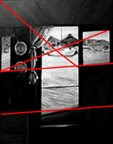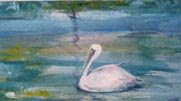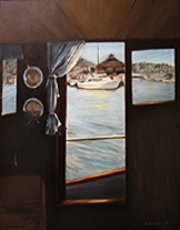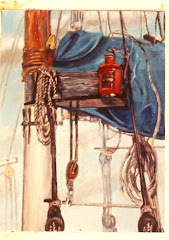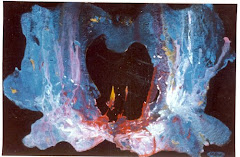The arts are not restricted to professionals and geniuses. There is something about art that brings serenity to one’s life.
Drawing is as individual as handwriting. Most people only look; as an artist you must learn to see. You have heard it called the artist’s eye.
If you are an advanced artist you may find ideas here that you haven’t thought of. Sketching is a way of life that leads to better painting.
Seat yourself comfortably at a table. Hold your pencil as shown in the illustration. Use your
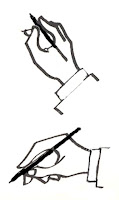 arm rather than your fingers to move your pencil. This will give you more freedom of motion. Sit in a straight back chair in front of a table. Rest the drawing board on an angle. You can rest it on your lap leaning against the table or tilt the board on an angle with a box under it. Use masking tape to hold your paper on the drawing board.
arm rather than your fingers to move your pencil. This will give you more freedom of motion. Sit in a straight back chair in front of a table. Rest the drawing board on an angle. You can rest it on your lap leaning against the table or tilt the board on an angle with a box under it. Use masking tape to hold your paper on the drawing board.Practice free flowing lines by filling a sheet or more of paper using number a 2B pencil; lift and press on the pencil while you write large letters of the alphabet in longhand. Use your wrist to move the pencil rather than bending your fingers.
The nature of these marks and the total effect of their fluidity will establish both style and tone of your drawing. Experiment with different size pencils.


 To get a good point on the softer pencils hold a penknife in one hand and guide the pencil with your thumb of the other hand as shown in the picture.
To get a good point on the softer pencils hold a penknife in one hand and guide the pencil with your thumb of the other hand as shown in the picture.
Choose a room that is painted with one color. Look where the light hits the wall. See how much lighter the color of the wall is where the light hits it. Now, look where it meets the ceiling. See how much darker the ceiling looks than the wall. Next, look around the walls of the room at the different shades of gray.
Turn off the light or close the drapes and the walls appear darker. If there is no light at all, everything appears black. What color is it inside a watermelon before we open it? It’s black. The same with the refrigerator -- it is black inside when the door is closed and light when the door is open. Once you have a fairly long point, rub one side of it on sandpaper t
Once you have a fairly long point, rub one side of it on sandpaper t o flatten it as shown in the photo and illustration .
o flatten it as shown in the photo and illustration .
Practice values with the different weight pencils and strokes. 
To master drawing a straight line without using a ruler (although there is nothing against using one), follow the simple exercise below:
Your eye will tell your hand what to do. For example, to draw a straight line put a dot on the left side of the paper and another on the right side. Place your pencil on the dot on the right side of your paper. Do not look at the pencil; look only at the other dot and bring the pencil over to it.
Your homework is to work on these simple exercises. Sign, date and keep everything you do no matter what it looks like -- that way you will be able to watch your progress.
Every drawing you do will have some good in it. Learn from what you do well. Practice, practice, practice, before you go to the next lesson.
I look forward to your comments and questions. Click on "Comments" below.
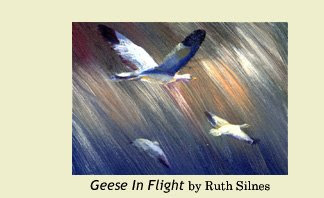
 If your eye level is above the vase; the top will look oval. You will see all around the top of it and the bottom of the vase will arch down. If you are looking up at the vase the top will arch up and the bottom of the vase will look straight.
If your eye level is above the vase; the top will look oval. You will see all around the top of it and the bottom of the vase will arch down. If you are looking up at the vase the top will arch up and the bottom of the vase will look straight.

 Happy drawing. Before going to the next lesson work on these
Happy drawing. Before going to the next lesson work on these 

 Use cheap paper to do these training exercises.
Use cheap paper to do these training exercises. Free hand perspective drawings are done on scraps of yellow paper.
Free hand perspective drawings are done on scraps of yellow paper. It is important to draw what you see and discard what your intellect tells you it should be. Trust your eyes more than your brain.
It is important to draw what you see and discard what your intellect tells you it should be. Trust your eyes more than your brain.

 The illustrations above are general proportions. Everyone doesn’t fit the same figure, and bending of the body will throw off the measurements.
The illustrations above are general proportions. Everyone doesn’t fit the same figure, and bending of the body will throw off the measurements.
















